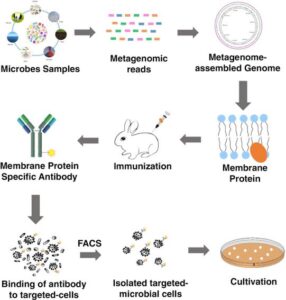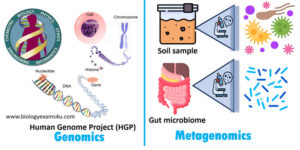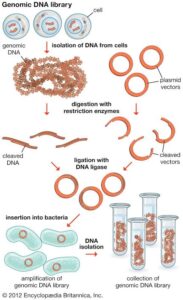Back to: MICROBIOLOGY 500 LEVEL
Welcome to class!
My sharp and ever-curious scientist! You’ve been building a solid foundation in molecular biology, and today’s topic brings together two powerful ideas that help researchers make sense of the vast world of genetic information. We’re talking about Genomic Libraries and Bioinformatics Basics. Think of this as learning how to organise a big bookshop (genomic library) and how to use a smart computer to find and study specific books (bioinformatics). Let’s break it down, step by step, the Afrilearn way—simple, human, and relevant to you.
Genomic Libraries And Bioinformatics Basics
Have you ever walked into a large university library and felt overwhelmed by the number of books? Imagine if you had to find one specific sentence inside all those books—it would be impossible without proper organisation and a computer system to search through them. That’s exactly what scientists face when studying the full DNA of an organism. So, they use genomic libraries and bioinformatics tools to manage and understand this complex data.

What Is a Genomic Library?
A genomic library is a collection of DNA fragments from an organism’s entire genome, stored in host cells (usually bacteria or yeast). It’s like creating a bookshelf of an organism’s entire DNA, broken down into smaller readable “books” (fragments).
How is it made?
DNA is extracted from a cell.
It is cut into smaller pieces using restriction enzymes.
These fragments are inserted into vectors like plasmids or phages.
The vectors are placed into host cells, creating a large collection of cells, each carrying a piece of the organism’s genome.
Why is this useful?
Scientists can study individual genes.
Useful in gene cloning, sequencing, or identifying disease-causing genes.

Real-life example: Imagine researchers at ABU Zaria creating a genomic library from a tomato plant to find the gene responsible for drought resistance in Nigerian soil. That’s real-world application!
What Is Bioinformatics?
Bioinformatics is the use of computers and software to collect, store, and analyse biological data, especially DNA and protein sequences.
It helps scientists:
Compare genes across organisms
Predict the function of unknown genes
Detect mutations linked to diseases
Manage large data sets from sequencing projects
Basic tools in bioinformatics:
BLAST (Basic Local Alignment Search Tool): Helps compare a DNA sequence to others in a database.
GenBank: A huge online database that stores DNA sequences from around the world.
FASTA format: A standard way of writing DNA sequences for computers to read.

Why They Matter Together
Genomic libraries give us the physical access to all parts of an organism’s genome, while bioinformatics gives us the tools to understand what each part does. Without bioinformatics, interpreting the data from genomic libraries would be like trying to read thousands of books without knowing the language!
Summary
- A genomic library stores DNA fragments from an organism’s genome inside host cells using vectors.
- Bioinformatics is the use of computers to analyse and interpret biological data.
- Together, they allow scientists to study genes, discover functions, and solve real-world problems in medicine, agriculture, and environmental science.
Evaluation
- What is a genomic library, and how is it created?
- Name two uses of bioinformatics in modern research.
- Mention one basic tool used in bioinformatics and its function.
Bravo! You’ve just unlocked a big part of modern science—how we store and understand genetic information. Whether it’s a Nigerian scientist developing better crops or fighting infectious diseases, these tools are making a real difference. Keep asking questions, keep exploring ideas, and remember—Afrilearn is here to help you grow into the science leader Nigeria and Africa need. See you in the next class!
